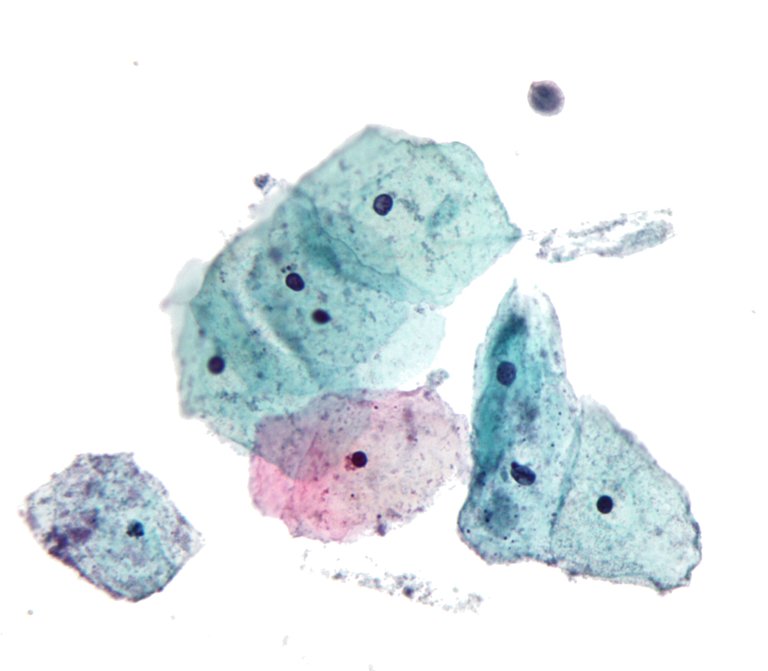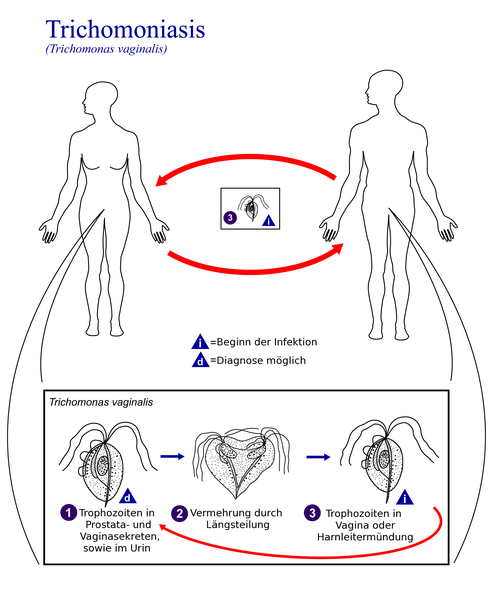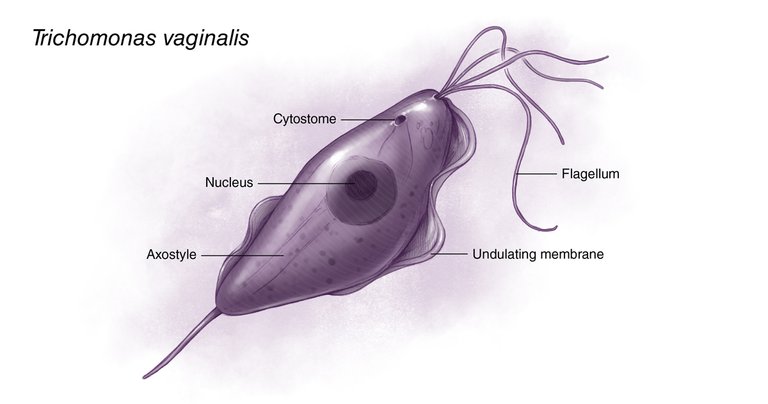Hello friends of steemit starting with a program of topics related to sexually transmitted diseases, which I have called "ONE MINUTE OF LIFE", I come to give you a brief and direct information in the field of health, since it is very important know how to take care of our bodies, it is for this reason that I want to speak in this initial post of a subject that deserves everyone's attention.
Today I bring you a topic that is very important for everyone, I talk about trichomoniasis which is a disease caused by a protozoan parasite called Trichomonas vaginalis. Trichomoniasis can cause symptoms in women, but most men do not have symptoms. We have to pay close attention because it is very dangerous for our health.
I want to clarify in this post basic concepts that allow us to understand what this disease is and above all how to deal with it since it is contagious with sexual transmission.
Let's start this new adventure of health!

What is the disease of La trichomoniasis?
Trichomoniasis is a sexually transmitted disease caused by a parasite. It is spread through sexual intercourse with an infected person. Many people do not show symptoms. If they have symptoms, they appear between five and 28 days after the infection.
Other data
The parasite can not live outside the body of the person it infects and, therefore, can not be transmitted by towels or in swimming pools or public toilets.
In addition, trichomoniasis is considered the most common curable sexually transmitted infection.
How is trichomoniasis spread
Trichomoniasis is caused by a tiny parasite called trichomonas (not visible to the naked eye). Trichomoniasis is spread by having unprotected sex with someone infected. It spreads when the pre-ejaculatory semen-liquid vaginal secretions come into contact with or enter the penis, vulva or vagina.
Trichomoniasis is usually transmitted during vaginal sex. It is also spread by contact between two vulvas, by sharing sex toys and touching their own genitals or those of the couple with infected secretions in their hands. The infection can affect the vulva, vagina, penis, and urethra, but generally does not affect other parts of the body (such as the mouth or anus).
Trichomoniasis is not spread by casual contact, so you can not get it by sharing food or drinks, or by kissing, hugging, holding hands, coughing, sneezing, or sitting on a toilet seat.
Many people with trichomoniasis do not have any symptoms, but they can spread the infection to others. So using safer sex condoms is the best way to prevent trichomoniasis, even if you and your partner seem to be in very good health.
Symptoms of trichomoniasis
If you have symptoms of trichomoniasis, these usually appear between three days and a month after you have contracted the infection.
Trichomoniasis can cause symptoms in people of any gender,
but most likely it causes vaginitis. Symptoms of vaginitis caused by trichomoniasis include:
- Green, yellow, gray, foamy or fetid vaginal discharge
- Blood in the vaginal discharge
-Pickness and irritation in the vagina and around it - Inflammation of the genital area
- Pain during sexual intercourse
Other symptoms of trichomoniasis include pain and burning when urinating, constant urination, discharge from the urethra, and itching and irritation inside the penis.
The signs of trichomoniasis are almost imperceptible or very painful and irritating. They often appear and disappear, but that does not mean the infection is gone. The only way to end trichomoniasis is by treating it with medication.
If you or your partner have any of these symptoms, go to a nurse, a doctor or the local Planned Parenthood Health Centers. You can transmit trichomoniasis to other people regardless of whether you have symptoms or not, so it's important that you get tested if you think you may be infected.

Good news...
Treatment and prevention of trichomoniasis
Since the man can transmit the infection to the sexual partner, even if he does not present symptoms, it is preferable to treat the two members of the couple to eliminate the parasite. The antibiotic of choice, the preferred one to treat the infection, is metronidazole, which is usually administered in a single dose. People who are treated with this drug should not drink alcohol, as the mixture of both substances produces interactions that sometimes produce severe nausea and vomiting.
The use of condoms would help prevent the spread of trichomoniasis. In the presence of the infection, although there are no symptoms, the treatment of both members of the couple is the most advisable.
conclusion
In this post to be educational for the whole community for both adults and children, no photos were published that go beyond the imagination of the little ones. At the end of this publication, I will leave the bibliographical references where you can find much more information on this subject.
Details of the disease Trichomoniasis are explained more precisely in the video that I will leave below.
It is very important to note that this is a very delicate disease, which can lead to dangerous disorders if not controlled. It should be noted that this disease has a cure, that is why it is very important to prevent self-care among couples at the moment of having a relationship, the use of condoms and, even more important, the taking of cytology every year or whenever abnormal things are noticed in our body.
Information reference
- Midlej V .; Benchimol M. (2010). "Trichomonas vaginalis kills and eats- evidence for phagocytic activity as a cytopathic effect". Parasitology
- Scientists crack the genome of the parasite causing trichomoniasis Archived 2009-01-04 at the Wayback Machine .. Physorg.com. Jan. 12, 2007.
- Epstein, Aaron; Roy, Subir (2010). "Chapter 50: Vulvovaginitis". In Goodwin, T. Murphy. Management of Common Problems in Obstetrics and Gynecology (5th ed.). Wiley-Blackwell. p. 228 .. Archived from the original on 2017-02-15. In 80% of cases, the diagnosis of trichomoniasis is confirmed by microscopic examination of saline wet mount, with the observation of motile trichominondas; their shape is "football-like" with moving flagella.
- Fouts AC, Kraus SJ (1980). "Trichomonas vaginalis: reevaluation of its clinical presentation and laboratory diagnosis". J Infect Dis.


Hi! I am a robot. I just upvoted you! I found similar content that readers might be interested in:
https://www.plannedparenthood.org/learn/stds-hiv-safer-sex/trichomoniasis
Excellent post !! Greetings friend success accounts with my humble vote